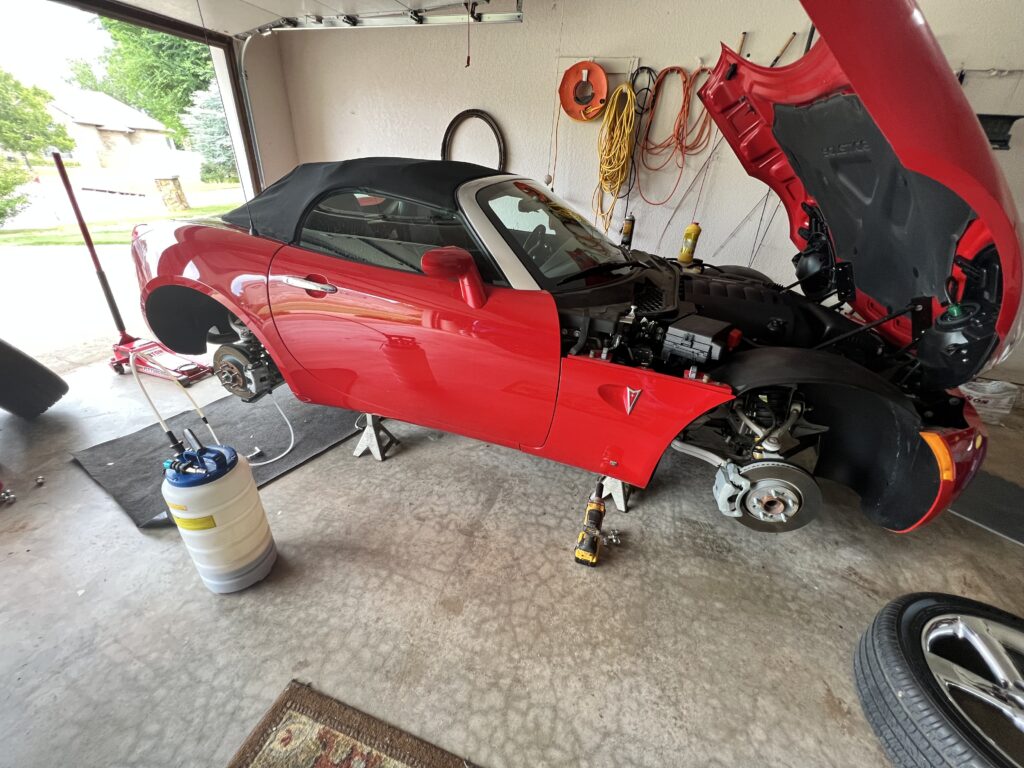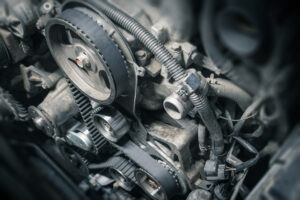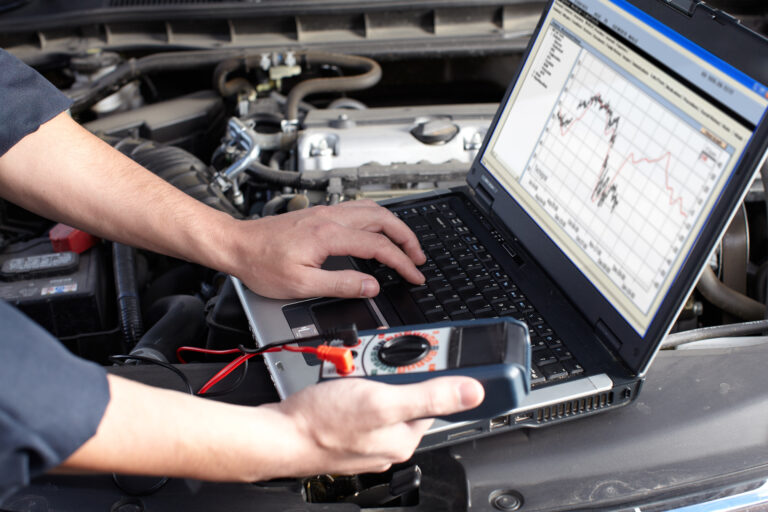Who We Are
Bailey’s Mobile Services is a proud small business based in Central Oklahoma, dedicated to providing superior mobile mechanic services throughout the region.
With over 10 years of professional experience as an ASE Certified Mechanic, I specialize in servicing SUVs, light trucks, and cars of all makes and models, delivering expert care and convenience to every customer.
I am blessed with a wonderful wife and four young children who wholeheartedly support my mission. Together, we are committed to offering high-quality, God-honoring service to our community, ensuring excellence and integrity in every repair.


Our Vision
In 2020, I left my position at a Chevrolet dealership to pursue my dream of starting my own business. My goal is to revolutionize the automotive repair experience by offering unparalleled convenience and exceptional repair quality. I am committed to sparing my customers the hassle of spending hours in waiting rooms or making multiple trips to a mechanic shop for vehicle repairs.
Core Services
Any Questions?
Vehicle preventive maintenance involves regularly scheduled inspections, services, and repairs designed to keep your car in optimal condition and prevent potential problems before they occur. It includes tasks like oil changes, tire rotations, brake inspections, fluid checks, and replacing parts like filters, belts, and spark plugs.
By addressing wear and tear early, preventive maintenance improves vehicle safety, enhances reliability, extends lifespan, and reduces the risk of costly repairs or unexpected breakdowns. Following the manufacturer’s recommended maintenance schedule ensures your vehicle performs efficiently and remains roadworthy.
Vehicle Maintenance Guide
Monthly
- Check tire pressure, fluids, and lights.
Every 3,000–5,000 Miles
- Change oil and filter.
- Rotate tires.
- Inspect belts and hoses.
Every 15,000–30,000 Miles
- Replace engine air filter.
- Inspect brakes and suspension.
Every 30,000–60,000 Miles
- Replace Fuel filter.
- Change transmission fluid.
Every 60,000–100,000 Miles
- Replace timing belt and coolant.
- Inspect water pump.
- Replace Spark Plugs
- Replace all fluids
Annually
- Align wheels, flush brake fluid, and do a full inspection.
Regular maintenance keeps your vehicle safe, reliable, and cost-efficient.
Here are signs your car may need a tune-up:
Performance Issues
- Decreased fuel efficiency: You’re visiting the gas station more often.
- Rough idling or stalling: The engine struggles to stay running smoothly.
- Reduced power: The car feels sluggish or lacks acceleration.
- Hard starts: Difficulty starting the engine.
Warning Lights
- Check engine light: Indicates potential problems requiring attention.
Unusual Noises
- Knocking or pinging: Could signal engine issues.
- Squealing or grinding: May point to worn-out components.
Time and Mileage
- Owner’s manual recommendations: Follow suggested intervals for tune-ups, usually every 30,000–50,000 miles or as specified.
Other Symptoms
- Vibration or shaking: May indicate engine or ignition system issues.
- Unusual exhaust: Excessive smoke or strange odors could mean trouble.
Regular tune-ups ensure your car runs efficiently and prevent larger, costly repairs. If you’re unsure, consult a trusted mechanic for an inspection.
Winter Prep for Cars in the South
- Tires: Check tread depth and tire pressure.
- Fluids: Ensure proper antifreeze mix, winter washer fluid, and consider winter-grade oil if needed.
- Battery: Test and clean terminals to avoid cold-weather issues.
- Heater & Defroster: Ensure both are functioning properly.
- Wipers: Replace if streaking; consider winter-grade blades.
- Emergency Kit: Pack a blanket, water, jumper cables, and a flashlight.
- Gas Tank: Keep it at least half full to prevent fuel line freezing.
- Belts & Hoses: Check for wear and replace if needed.
- Wash & Wax: Protect against road grime and salt.
Stay prepared for unexpected cold snaps while keeping your car running smoothly!
Road Trip Car Prep
- Check Fluids: Engine Oil, Transmission Fluid, coolant, brake fluid, and washer fluid.
- Inspect Tires: Tread, pressure, and spare tire condition.
- Test Battery: Ensure charge and clean terminals.
- Check Brakes: Confirm pads and rotors are in good shape.
- Lights: Test all exterior and interior lights.
- Pack Emergency Kit: Jumper cables, tools, first aid, water, and snacks.
- Inspect Belts & Hoses: Replace if cracked or worn.
- Wipers & Washer Fluid: Replace blades and fill washer fluid.
- Test Drive: Ensure everything runs smoothly.
- Inspection: Get your vehicle inspected by a trusted & Certified Mechanic
This quick prep ensures a safe, worry-free trip!
Brake squeaks can be caused by:
- Worn Pads: Indicators squeal when pads need replacement.
- Debris: Dirt or particles trapped between pads and rotors.
- Moisture: Temporary noise from dew or rain.
- Glazing: Overheating smooths pads or rotors.
- Low Lubrication: Dry caliper pins or backing plates.
- Cheap Pads: Hard materials in low-quality pads.
If the noise persists, have your brakes inspected for safety.
A brake job involves maintaining or repairing your braking system. It typically includes replacing brake pads, resurfacing or replacing rotors, inspecting hardware, servicing brake fluid, and lubricating components to ensure safe, efficient operation.
The check engine light can turn on for various reasons, including:
- Loose or Damaged Gas Cap: The most common cause, affecting fuel system pressure.
- Oxygen Sensor Issues: Faulty sensors affect fuel efficiency.
- Mass Airflow Sensor (MAF) Problems: Impacts engine performance and fuel economy.
- Spark Plug or Ignition Coil Issues: Causes misfires and poor engine performance.
- Catalytic Converter Problems: May lead to reduced efficiency or emissions issues.
- Faulty Sensors or Wiring: Issues with other sensors like the EGR or coolant temperature sensor.
To determine the exact cause, consult a professional mechanic. Addressing the issue promptly prevents further damage.
The primary cause of tire damage is improper tire maintenance, including:
- Underinflation or Overinflation: Incorrect pressure leads to uneven wear and increased risk of blowouts.
- Poor Alignment: Misaligned wheels cause uneven tread wear.
- Road Hazards: Potholes, debris, and curbs can cause cuts, punctures, or sidewall damage.
- Excessive Wear: Driving on worn-out tread reduces grip and increases risk.
- Improper Loading: Overloading the vehicle puts excess strain on tires.
Regular inspections, proper inflation, and avoiding hazards help prevent tire damage and extend their lifespan.
You should replace your timing belt based on your vehicle manufacturer’s recommendations, typically between 60,000 and 100,000 miles. However, the exact interval can vary depending on your car’s make and model.
Signs it may need earlier replacement include:
- Noise: Ticking or squealing sounds from the engine.
- Performance Issues: Misfires or difficulty starting.
- Visible Wear: Cracks or fraying (if accessible).
Check your owner’s manual or consult a trusted mechanic to ensure timely replacement. Failure to replace it can lead to serious engine damage if the belt breaks.
You should replace your belts and hoses based on the manufacturer’s recommendations, typically:
Belts (e.g., serpentine and timing belts):
- Timing Belt: Every 60,000–100,000 miles or as specified in your owner’s manual.
- Serpentine Belt: Inspect every 30,000 miles and replace every 50,000–100,000 miles, depending on wear.
Hoses (e.g., radiator, heater, and vacuum hoses):
- Inspect annually for cracks, leaks, or bulges.
- Replace every 4–5 years or sooner if damage is found.
Signs of Wear:
- Belts: Cracks, fraying, squealing, or loss of tension.
- Hoses: Leaks, bulging, cracking, or softness.
Regular inspections during routine maintenance can help identify issues early and prevent breakdowns.


